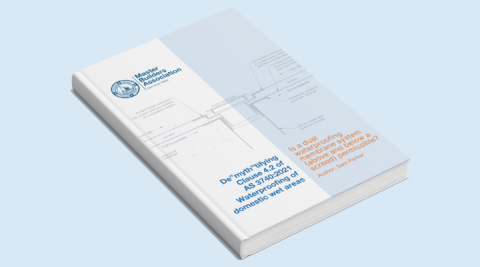Clause 4.2 of AS 3740 (Waterproofing of domestic wet areas) has quickly become one of the most misunderstood parts of the standard. It’s led to widespread confusion, unnecessary costs, and misinterpretation on building sites across the country.
At the centre of the issue is a myth: that a waterproofing membrane is always required behind wall sheeting. That’s not what the clause says - and it’s not what the standard intends. Yet the myth continues to circulate, causing headaches for builders, waterproofers and certifiers alike.
This guide sets the record straight. It walks you through exactly what Clause 4.2 means, why the changes were made in 2021, and how to apply it correctly in real-world situations. If you're working on internal wet areas, you need to understand the facts, because getting it wrong can cost you.

Key takeaways for builders:
-
Clause 4.2 does not preclude double membrane approach in all situations - this is one of the most common misconceptions.
-
The standard still allows two compliant approaches: placing the waterproofing membrane above or below the screed, or both.
-
Clause 4.2 aims to stop moisture from affecting structural elements, not to mandate a specific construction method.
-
Double-membrane approaches are not required unless specified by design or contract, or undertaken as best practice.
-
Certifiers should assess compliance based on performance, not assumptions about where membranes must be installed, or structural fall.
-
Builders can push back against incorrect interpretations using the language and clarification in this guide.

